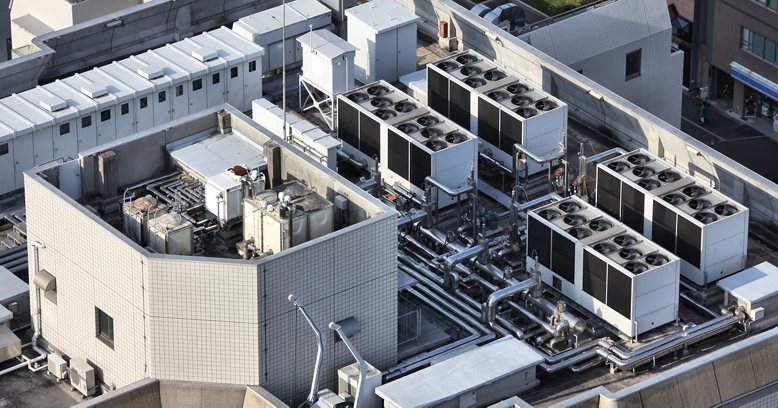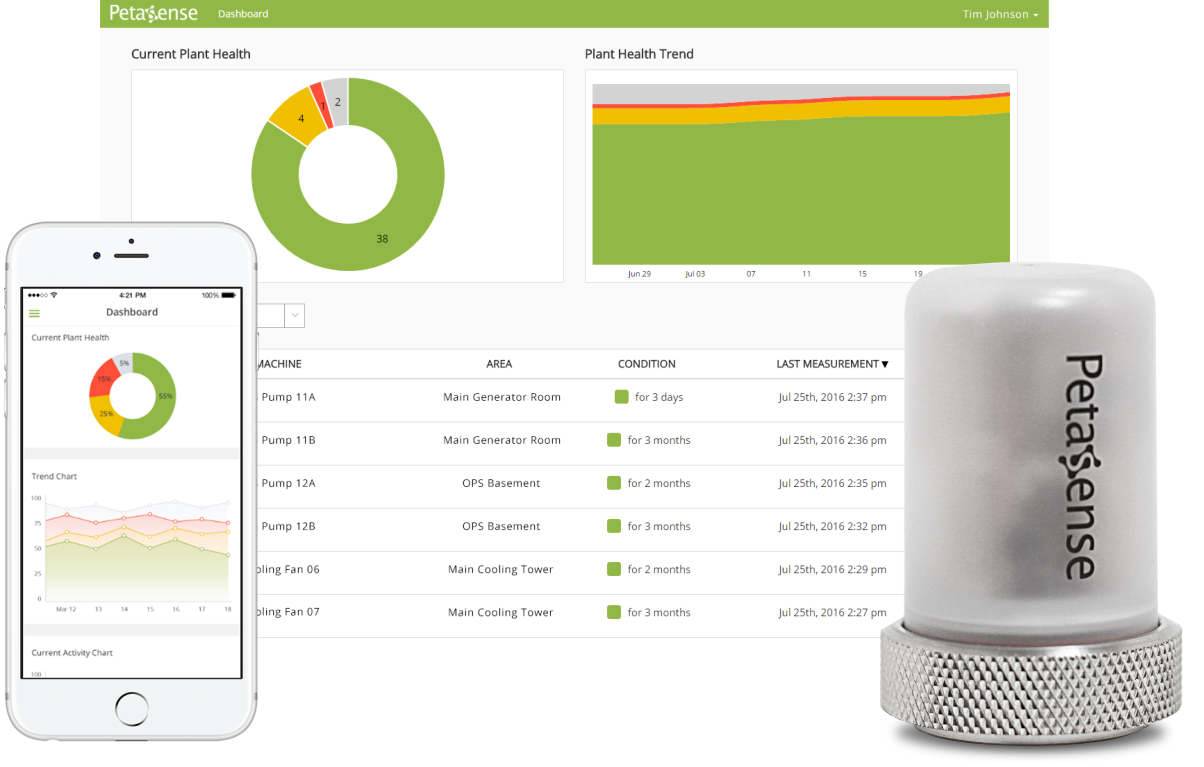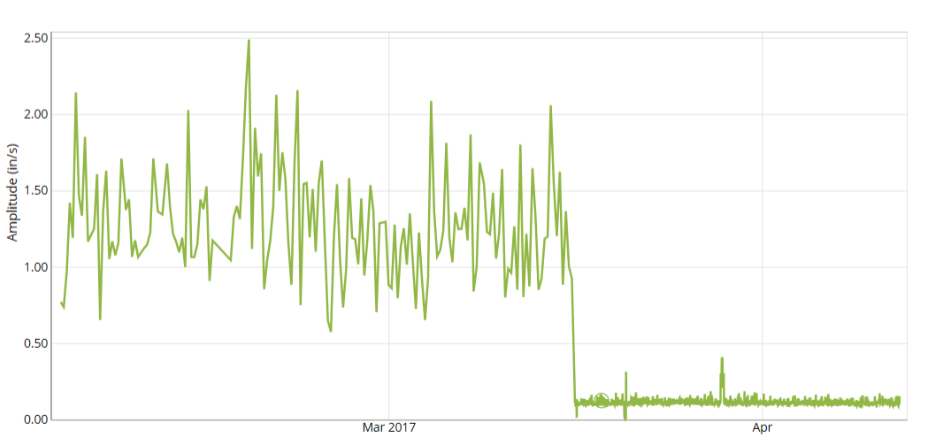AUGUST 8, 2017
JLL Invests in Machine Learning and Industrial IoT to Maximize Equipment Availability
REDWOOD CITY, CA

JLL successfully deployed Industrial IoT technology from Petasense to eliminate unnecessary preventive maintenance, accurately predict machine failures and optimize allocation of engineering resources.
“Petasense delivers on-demand predictive maintenance at a disruptive price point,” said Sean O’Connor, reliability engineer at JLL. “They are simplifying Industrial IoT by making use of wireless sensing and machine learning. It is big data without big problems.”
BACKGROUND
Formally known as Jones Lang LaSalle, JLL is a leading professional services firm at the forefront of providing commercial real estate services and integrated facility management solutions to its global clients. With its origins dating back to 1783, today the Fortune 500 company employs over 78,000 employees and has 300 corporate offices in more than 80 countries. As of March 31, 2017, LaSalle Investment Management had $58 billion of real estate under asset management.
A large part of JLL’s role is to maintain its commercial assets and provide safe and comfortable working conditions to its clients. Critical inputs like temperature, air flow and humidity are tracked and trended within the building automation system. For vibration-based condition monitoring, JLL utilized a walk-around program where the data was collected every 30-90 days, depending on the criticality of the equipment. On an annual basis, a maximum 6-12 datasets per asset were obtained.
CHALLENGES
JLL’s condition monitoring walk-around program came with its own set of challenges:
- If an equipment failure developed in between their walk-around cycles, there was no way for JLL to take corrective measures until the next cycle. As a result, JLL had to live with the imminent fear of a machine failure.
- When the equipment operators were sent to make fixes, they did not have access to vibration data while making the repairs. They had to rely on their “five senses” and judgement which was a big limitation.
- After a fix was made, no immediate feedback was available. The equipment was put back into service and often times, they had to wait 30, 60 or even 90 days before knowing if the repair was effective. And sometimes equipment operators inadvertently introduced brand new defects while performing a repair which resulted in unnecessary repeat or follow-up work orders.
To summarize, the walk-around condition monitoring program that JLL followed was an arduous manual time-consuming process with scope for errors every step of the way. Furthermore, it did not provide accurate predictions of machine failure and timely feedback about repairs.
GOALS
One of JLL’s customers is a leading Fortune 500 pharmaceutical company. The serious limitations of the existing walk-around condition monitoring programs prompted JLL to consider continuous monitoring solutions in the market. The team of reliability and maintenance engineers at JLL set forth the following evaluation criteria:
- Continuous Monitoring of Critical Assets: After running into several instances of unplanned downtime, machines failures and upset production schedules with their monthly walk-around program, JLL wanted continuous or near continuous monitoring of its critical assets.
- Elimination of Manual Data Collection: Manual data collection had always been a cumbersome process with issues arising in between walk-around cycles and variable machine conditions. JLL was on a lookout for a technology with a fully automated data collection process on a continuous or a near continuous basis.
- Access to Real Time Insights: JLL wanted to eliminate gaps and equip their craft workers with real time insights into machine data as they carried out the repairs. It also helped the workers gain instant feedback as soon as the fix was made. The idea of this was to eliminate the need for repeat or follow-up work orders.
- Quick and Easy Deployment: JLL was looking for a predictive maintenance system that was easy to deploy and quick to implement. They did not want to incur the expenses of wiring traditional sensors to their HVAC (Heating, Ventilation and Air Conditioning) equipment or undertake custom IT projects.
SOLUTION
JLL turned to Petasense, a Silicon Valley startup, for a trial to monitor its HVAC equipment at one of its leading life sciences’ client facilities in Redwood City.
In fact, when George Wittman, EVP and Head of the Life Sciences Business Unit saw the Petasense demo, he said, “I think this technology has the ability to truly transform the way JLL does predictive maintenance.”
JLL decided to innovate and implement IoT based predictive maintenance as a way to differentiate and gain competitive advantage. They rolled out the Petasense solution and the scope of the project spanned all critical rotating machines across two buildings. It included all the air handlers, exhaust fans, chillers and compressors.
Patent-pending, wireless vibration sensors called Motes were mounted on critical machines, connected to the facility’s Wi-Fi network, configured to the cloud, and JLL began receiving data and actionable intelligence in real-time. At the very outset, a baseline of machine health was established using 40 different features of vibration data and all future measurements were mapped against the baseline. The proprietary machine learning process took place in the cloud – here multi-parameter data was stored and analyzed for trends and anomalies. As a result, the reliability team at JLL was able to focus on deteriorating machines and gain insights into the utilization of their equipment.
“The ability to obtain measurements every 15 minutes is a huge leap from obtaining measurements every 30 to 90 days,” said site reliability engineer, Brad Shacter. O’Connor and Shacter were now able to access real time asset health information on an intuitive web or mobile dashboard anywhere, anytime.

Petasense Web & Mobile Applications shown with the Petasense Vibration Mote
RESULTS
The predictive maintenance solution from Petasense greatly improved asset reliability and productivity by providing for continuous monitoring of critical assets with real time data.
Soon after implementation, one AHU (Air Handler Unit) recorded abnormally high vibrations that were caused by an air turbulence issue. Specific running speeds on the VFD (Variable Frequency Drive) resulted in excess structural resonance. Fan vibration problems have been identified by experts as a serious cause of unplanned downtime.

Overall Trend Chart for AHU at Redwood City Facility [Source: Petasense Web Dashboard]
Petasense technology quickly alerted JLL of the anomaly. Shacter was able to access it on his mobile device and evaluate corrective measures almost instantaneously. As a result, JLL could make an informed business decisions within minutes.
Since only one such air handler unit was instrumented, the team at JLL took the learnings and knowledge from this one instance to their design team, identified a problem, and ended up implementing the fix in the design phase itself for 12-16 similar units.
O’Connor said, “Petasense helps us in building proactive and prescriptive strategies within the design phase itself. This enhances the overall productivity and provides us with an extra level of insurance.”
Besides identifying and minimizing such anomalies, Industrial IoT and machine learning technology makes is possible for JLL to continuously monitor, assess and predict the health of their critical AHUs, exhaust fans, chillers and compressors with actionable diagnostics in real time.
This has substantially improved the operational efficiency. JLL has been able to reallocate the majority of its spend from employing personnel for taking measurements and incurring huge repair costs to focusing on problem machines and employing vibration analysts and experts who can study and predict machine health.
By eliminating the moving parts that are prone to breakdowns and using cutting edge technology from Petasense, JLL has moved to “cultivating a first time fix culture or initiative” by getting it right the very first time. The team is so pleased with the results that they are in the process of implementing it at other facilities as well.
 Thanks for subscribing - stay tuned for our next newsletter
Thanks for subscribing - stay tuned for our next newsletter